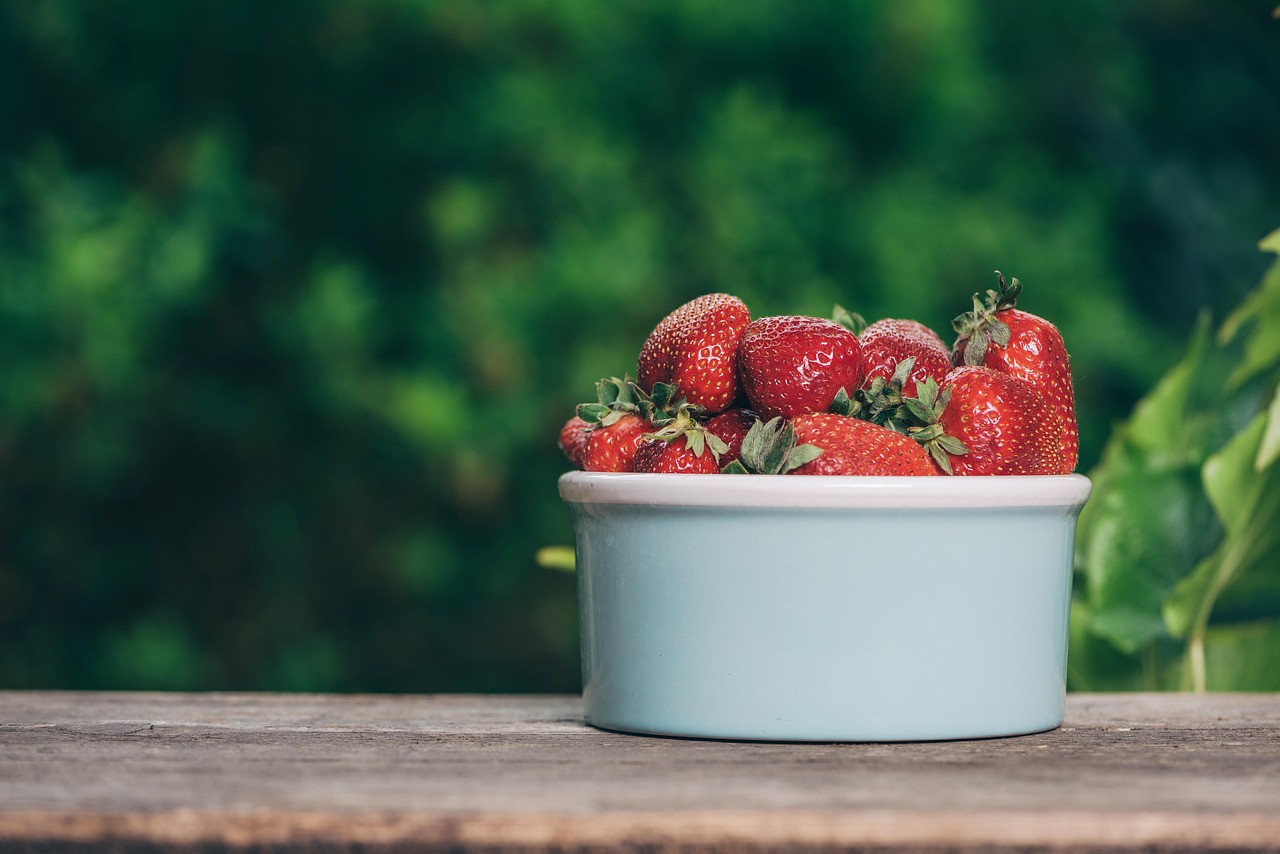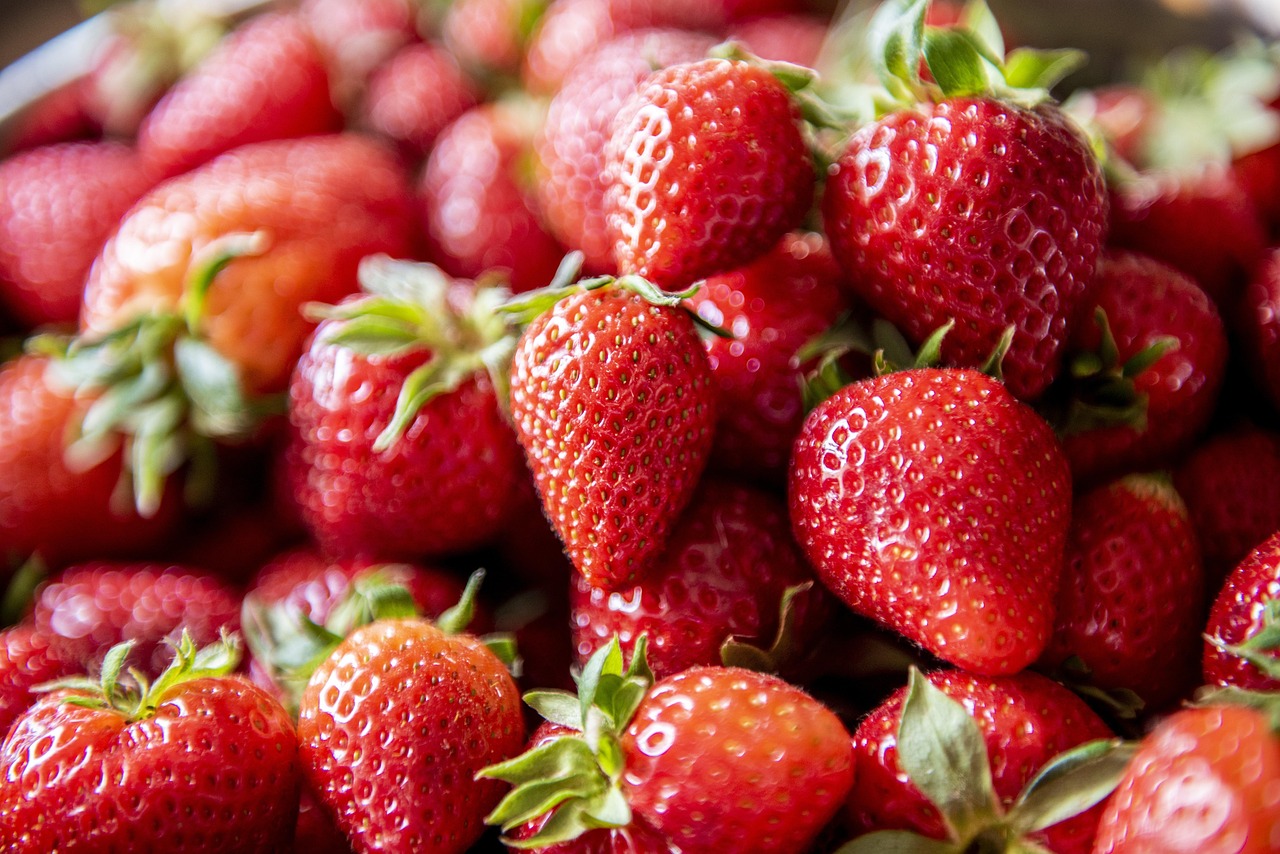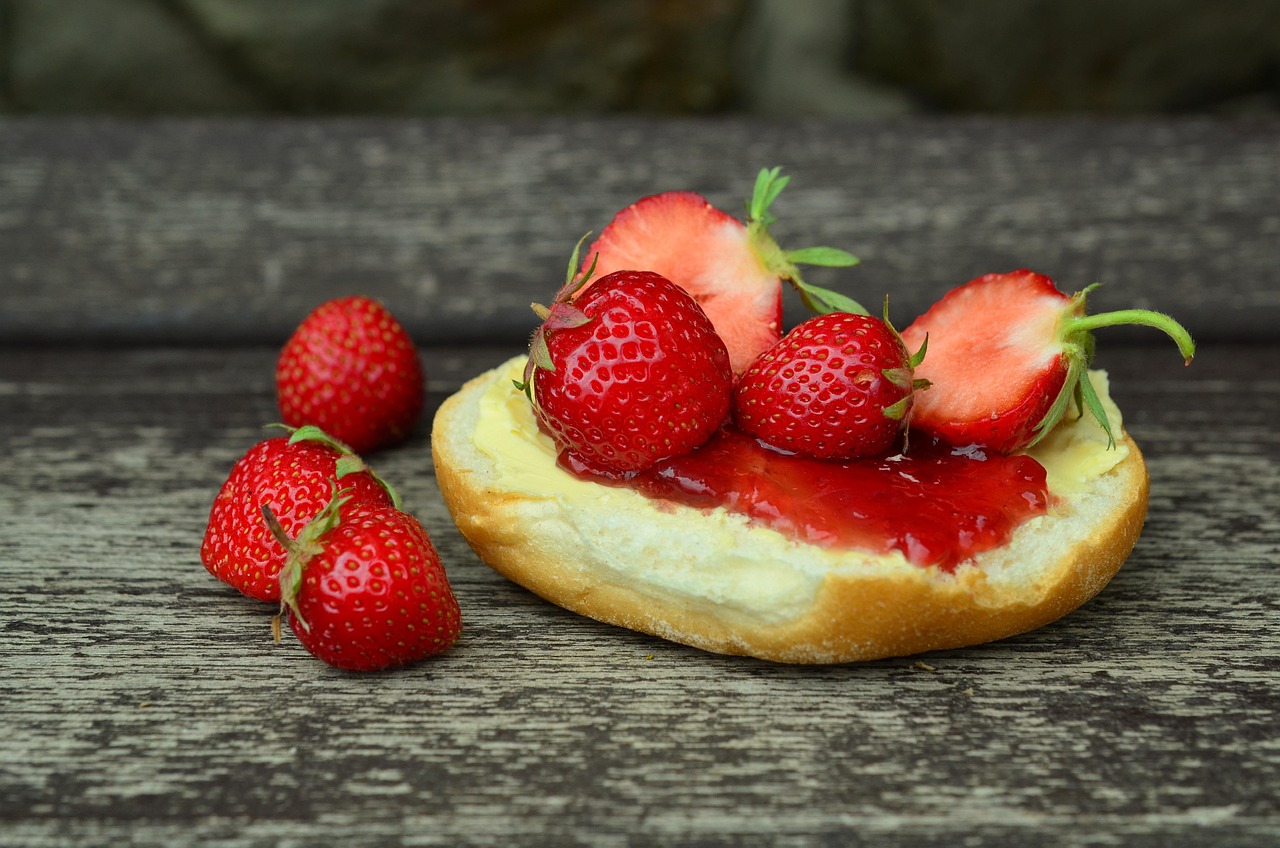The top strawberry varieties for Dehradun include the Chandler, Sweet Charlie, and Festival. These varieties are well-suited for the region’s climate and soil conditions, offering robust growth and high yields. Selecting the right variety can significantly enhance your strawberry gardening experience.
Understanding Strawberry Varieties

Strawberries are one of the most popular fruits worldwide. They are not only delicious but also offer numerous health benefits. Growing strawberries in your garden can be a rewarding experience. However, choosing the right variety is crucial, especially in regions like Dehradun, where the climate can vary significantly. Understanding the specific needs of each strawberry variety will help you cultivate healthy plants that yield abundant fruit.
In Dehradun, the weather is characterized by a temperate climate with distinct seasons. This climate can be ideal for growing strawberries, provided you select hardy varieties that can thrive in local conditions. The right choice of strawberry plants can make a substantial difference in your gardening success.
Factors to Consider When Choosing Strawberry Varieties
When selecting strawberry varieties for your garden, several factors should be considered:
- Climate Compatibility: Some varieties perform better in specific temperature ranges.
- Soil Conditions: Strawberries prefer well-drained, sandy loam soils rich in organic matter.
- Pest Resistance: Certain varieties are more resistant to pests and diseases.
- Harvesting Time: Different varieties produce fruit at different times of the year.
By taking these factors into account, you can choose strawberry varieties that will flourish in your garden and provide a bountiful harvest.
Popular Strawberry Varieties for Dehradun
Several strawberry varieties have gained popularity among local gardeners in Dehradun due to their adaptability and fruit quality. Here are some notable options:
| Variety | Description | Best Harvest Time |
|---|---|---|
| Chandler | Known for its large berries and excellent flavor. It is a June-bearing variety. | June |
| Sweet Charlie | This variety produces sweet and flavorful berries. It is suitable for early spring planting. | April to May |
| Festival | Produces high yields of large, firm berries with good flavor. | May to June |
Each of these varieties has unique characteristics that make them suitable for different gardening approaches. By understanding their attributes, you can make informed decisions that align with your gardening goals.
As you prepare to plant your strawberries, consider factors such as growth habits and space requirements. This knowledge will help you ensure that your strawberry plants thrive and produce delicious fruit for many seasons to come.
Preparing Your Garden for Strawberry Planting
Before planting strawberries, proper garden preparation is essential. A well-prepared garden bed will facilitate healthy growth and high yields. Here are key steps to follow when preparing your strawberry garden.
1. Selecting the Right Location
Strawberries thrive in sunny locations. Aim for a spot that receives at least 6 to 8 hours of sunlight each day. Additionally, good air circulation is important to prevent fungal diseases. Here are some factors to consider:
- Soil Quality: Ensure the soil is rich in organic matter and well-drained.
- Drainage: Avoid low-lying areas where water can pool after rain.
- Protection from Wind: A sheltered area can help protect delicate plants from harsh winds.
2. Soil Preparation
Preparing the soil properly will improve your strawberry plants’ health and productivity. Follow these steps for optimal soil preparation:
- Test Soil pH: Strawberries prefer a pH of 5.5 to 6.5. Testing kits are available at gardening stores.
- Add Organic Matter: Incorporate compost or well-rotted manure into the soil to enhance fertility.
- Tilling: Loosen the soil by tilling it to a depth of about 12 inches, which helps roots penetrate easily.
- Level the Soil: Rake the soil to create a smooth, even surface for planting.
Planting Strawberry Plants
Once your garden bed is prepared, it is time to plant your strawberries. The planting process can greatly influence the plants’ growth and yield. Consider the following guidelines:
Timing
The best time to plant strawberries in Dehradun is during early spring or late summer. Early spring planting allows strawberries to establish roots before the heat of summer.
Spacing
Proper spacing between plants is crucial for healthy growth. Here are some recommendations based on the variety:
- June-bearing Varieties: Space plants about 18 inches apart in rows that are 3 feet apart.
- Ever-bearing Varieties: Space plants 12-18 inches apart with rows 2-3 feet apart.
Planting Technique
Follow these steps for effective planting:
- Create holes in the soil large enough to accommodate the root system without crowding.
- Place the plant in the hole, ensuring that the crown (the point where roots meet the stem) is level with the soil surface.
- Cover the roots gently with soil and water the plants thoroughly after planting.
Caring for Your Strawberry Plants

Caring for your strawberry plants after planting is vital for their success. Here are key care practices to implement:
Watering
Strawberries require consistent moisture, especially during flowering and fruiting stages. Water them regularly to keep the soil evenly moist but not soggy. A drip irrigation system can be effective in maintaining moisture without wetting the foliage.
Mulching
Applying mulch around your strawberry plants can help retain moisture, suppress weeds, and maintain an even soil temperature. Use organic materials such as straw, wood chips, or shredded leaves as mulch.
Pest and Disease Management
Pests and diseases can threaten strawberry plants. Regularly inspect plants for signs of trouble. Common pests include:

- Aphids: Small insects that suck sap from leaves.
- Spider Mites: Tiny pests that can cause leaf discoloration.
- Slugs: These can damage leaves and fruit.
If you notice any pests, consider using organic methods for control, such as introducing beneficial insects or using insecticidal soap.
Fertilizing Strawberry Plants
Proper fertilization is essential for healthy strawberry growth and maximizing fruit yield. Understanding the nutritional needs of your plants will help you provide them with the right nutrients at the right time.
Types of Fertilizers
There are several types of fertilizers suitable for strawberries, each offering distinct advantages:
- Granular Fertilizers: These are easy to apply and can release nutrients slowly over time. Look for a balanced fertilizer with equal parts nitrogen, phosphorus, and potassium (N-P-K).
- Liquid Fertilizers: These provide quick nutrient uptake and are ideal for addressing immediate deficiencies. They can be applied every few weeks during the growing season.
- Organic Fertilizers: Compost and well-rotted manure improve soil structure and provide a slow release of nutrients. They also enhance microbial activity in the soil.
Fertilization Schedule
Timing is crucial when fertilizing strawberries. Follow this general schedule for optimal results:
- Pre-Planting: Incorporate organic matter into the soil before planting to boost fertility.
- Early Spring: Apply a balanced fertilizer when plants emerge from dormancy, as they start to grow.
- During Flowering: A mid-season application of fertilizer can support fruit development.
- Post-Harvest: Fertilize again after harvesting to promote healthy growth for the next season.
Harvesting Strawberries
Harvesting strawberries at the right time ensures maximum flavor and sweetness. Knowing when and how to pick strawberries will enhance your gardening experience.
When to Harvest
The best time to harvest strawberries is when they are fully ripe. Look for these signs:
- Color: The berries should be a deep red color with no green or white patches.
- Firmness: Ripe strawberries will feel firm yet slightly soft to the touch.
- Aroma: A sweet fragrance is a good indicator that strawberries are ripe.
How to Harvest
To harvest strawberries, follow these steps to prevent damage to the fruit and plants:
- Use Clean Tools: Use scissors or garden shears to cut the stem, avoiding pulling on the fruit.
- Leave a Stem: Always leave a small part of the stem attached to the berry when picking.
- Pick in the Morning: Harvest in the early morning when temperatures are cooler to maintain fruit quality.
- Avoid Bruising: Handle berries gently to prevent bruising and damage during transport.
Storing Fresh Strawberries

Storing your freshly harvested strawberries properly preserves their quality and flavor. Follow these tips for effective storage:
- Avoid Washing Before Storage: Wash strawberries only before consuming them to prevent moisture buildup.
- Refrigeration: Store unwashed strawberries in the refrigerator in a shallow container lined with paper towels. This helps absorb excess moisture.
- Airtight Containers: For longer storage, consider placing them in airtight containers or freezer bags if freezing is necessary.
By following these guidelines for fertilization, harvesting, and storing strawberries, you can enjoy a rewarding gardening experience while ensuring the best possible quality of your fruit. Understanding each phase of strawberry cultivation will lead to healthier plants and a more abundant harvest.
Maintaining Strawberry Plants Through the Seasons
To ensure a successful strawberry harvest year after year, it is vital to maintain your plants properly throughout the seasons. Each season presents unique challenges and opportunities for strawberry cultivation.
Spring Care
In spring, your strawberry plants come out of dormancy and begin to grow actively. This is a critical period for plant care:
- Fertilization: As discussed earlier, applying a balanced fertilizer will promote strong growth.
- Weed Control: Regularly check for weeds that can compete for nutrients and water. Mulching can help suppress weed growth.
- Monitoring for Pests: Keep an eye out for pests that may emerge as temperatures rise. Early detection is the key to effective management.
Summer Maintenance
During summer, strawberries can face heat stress. Here are some tips to help your plants thrive:
- Watering: Maintain consistent moisture levels, especially during dry spells. Drip irrigation systems are effective at delivering water directly to the roots.
- Mulching: Continue to use mulch to retain soil moisture and keep the roots cool.
- Harvesting: Regularly harvest ripe strawberries to encourage further fruit production.
Fall Preparation
As fall approaches, it is time to prepare your strawberry plants for the winter months:
- Post-Harvest Care: After the last harvest, remove any dead leaves and debris to reduce disease risk.
- Fertilization: A final round of fertilizer will help the plants store energy for the winter.
- Mulching for Winter: Apply a thicker layer of mulch to protect roots from freezing temperatures.
Winter Protection
In winter, strawberries go dormant. However, some care is still necessary to protect your plants:
- Monitoring Soil Moisture: Check soil moisture levels occasionally during dry spells to prevent desiccation.
- Avoid Heavy Foot Traffic: Avoid walking on the garden beds to prevent root damage when the ground is frozen.
Final Thoughts
Choosing the right strawberry varieties for Dehradun and implementing effective care practices can lead to a bountiful harvest. By understanding the specific needs of each strawberry variety and adapting your gardening techniques to seasonal changes, you can cultivate healthy plants that yield delicious fruit.
The key takeaways from this article include:
- Select hardy strawberry varieties suited for the local climate.
- Prepare your garden adequately and provide consistent care throughout the growing season.
- Implement effective pest management and fertilization strategies.
- Harvest and store strawberries properly to enjoy their fresh flavor long after picking.
With dedication and knowledge, your strawberry gardening journey can be both fruitful and enjoyable. Whether you are a novice gardener or a seasoned pro, investing time in understanding your plants will undoubtedly lead to rewarding results in your strawberry patch.
As you embark on this gardening adventure, remember that each season brings new opportunities and challenges. Embrace the process, learn from your experiences, and soon you will be enjoying the sweet rewards of your hard work.
